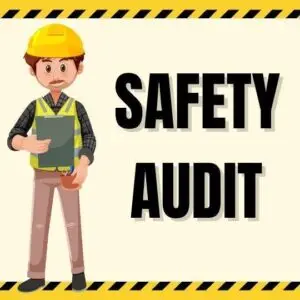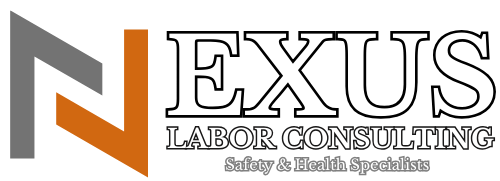Did you know?
In New York City, the Department of Buildings (DOB) can fine the owner, permit holder, and employer of an untrained worker up to $5,000 per worker. The DOB can also:
- Deny or automatically withhold construction or demolition permits
- Fine the permit holder $2,500 for failing to keep a training record log
- Conduct unannounced inspections to verify compliance
The DOB holds permit holders responsible for ensuring that workers at their sites are trained.
Other penalties for OSHA violations include:
- Willful or repeated violations: A civil penalty of up to $161,323 per violation
- Serious violations: A civil penalty of up to $16,131 per violation
- Other-than-serious violations: A civil penalty of up to $16,131 per violation
- Some ways to avoid OSHA citations include:
- Performing risk assessments
- Having strong safety policies
- Enforcing safety policies
- Training employees
- Encouraging employees to “See Something Say Something”
- Providing the appropriate safety equipment
In New York City, damaging the roots of a tree can result in a fine of up to $1,000 for a standard violation, with more serious offenses like removing a tree without a permit potentially leading to fines as high as $15,000 and possible imprisonment.
Key points to remember:
- Illegal to damage trees: It is against the law to intentionally or accidentally harm a street or park tree in NYC.
- Report violations: If you see someone damaging a tree, you can report it to the authorities.
- Tree work permit needed: Any work on or near a tree, including root manipulation, usually requires a permit from NYC Parks.
In New York City, a construction company owner can potentially face prison time if a worker dies on the job, especially if the death is deemed to be due to gross negligence or willful violation of safety standards, which could lead to criminal charges like criminally negligent homicide, potentially resulting in jail time depending on the specifics of the case.
Key points to remember:
Strict construction safety laws:
New York has stringent construction safety laws, and violations can lead to severe penalties, including jail time.
Criminal liability:
If a company owner is found to have knowingly disregarded safety hazards that directly led to a worker’s death, they can be held criminally liable.
Common Violations and Findings
During our safety audits, we have identified several common areas of concern that can impact workplace safety. Some of these areas include:
Electrical: Electrical hazards are frequently observed during our inspections. To address this issue, we recommend focusing on training and implementing daily equipment inspections to reduce the risk associated with electrical hazards.
Fall Protection: Fall protection remains a high-risk area in many workplaces. Our customized training programs and policy updates can help you minimize fall-related incidents and injuries.
Scaffolding: Scaffolding is another area of concern that we often observe during inspections, particularly regarding guardrails. Our team can provide training that can help in meeting scaffolding safety regulations and requirements.
Fire Protection: We commonly identify fire protection hazards. Our consultants can help you identify hazards and assist in developing proper fire protection procedures to reduce fire-related risks.
Personal Protective Equipment (PPE): Non-compliance with PPE requirements is a frequent observation during our audits. We can help you create a culture of safety by providing training on proper PPE usage and implementing policies to ensure compliance.
Does my jobsite need safety inspection and auditing services?
Frequent and regular jobsite inspections are critical to ensure the safety of workers and prevent costly violations. According to OSHA, failure to conduct these inspections is one of the most commonly cited violations. To comply with OSHA standards, employers must have a competent person perform the inspections. Competent persons are trained to identify hazardous conditions and has the authority to take prompt corrective measures to eliminate those hazards. Periodic inspections are crucial to identifying hazards and addressing them before accidents occur. The frequency of inspections can vary depending on the industry, but construction sites often require daily, weekly, or monthly inspections. Failure to comply with jobsite inspection regulations can result in OSHA fines, decreased morale, and negative publicity.
Common Safety Parameters:
- General Safety
- Signs, Signals & Barricades
- Housekeeping
- Stairways and Ladders
- PPE
- Cranes & Rigging
- Toxic & Hazardous Substances
- Material Handling
- Stairways and Ladders
- Mobile Elevating Work Platforms
- Fall Protection
- Fire Protection

Benefits of Safety Inspection and Auditing for Your Organization
- Use our safety inspection statistics to target specific training topics that reduce your organizations risk of injury and property damage.
- Detailed reports identify potential safety issues and hazards specific to your industry & organization, which can help prevent accidents, injuries, & OSHA citations.
- Compare and contrast inspection results from each location, contractor, or supervisors to assist with enforcement and incentive programs.
- Help you develop policies and procedures that have a direct impact on reducing hazards.
- Assistance in effectively implementing a successful risk and OSHA citation mitigation strategy, which can reduce potential legal and financial liabilities.
- Compliance with industry regulations and standards so that your workplace meets legal requirements and minimize the risk of penalties and fines.
- Customizable services to fit the unique needs of your organization and industry.
